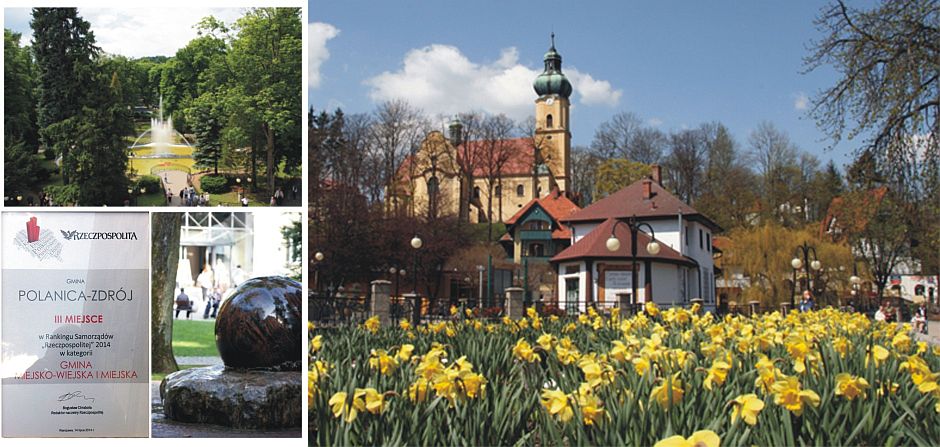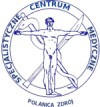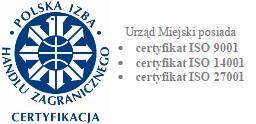Polanica Zdrój was first documented in 1347 under the name Heyde; at the time it belonged to the House of Glaubitz, knights resided at the Szczerba Castle. Nicolaus von Glubos was mentioned as first settlement owner, then in 1353 von Globos brothers (Otto and Otto Schram).
In the second half of 15th century, the House of Lozen became co-owner of settlement. After death of last family member in 1494 (Sigmund Seidlitz von Lazan), half of Polanica became property of Henryk Starszy Podiebradowicz, duke of Ziębica, first count of Kłodzko, whose then gave it to the Augustin Monastery in Kłodzko as a present. The other half of the village was for years property of knight families, then became a part of crown land. In 1538, Polanica, consisted of six farms and one mill, was buyed by Kłodzko town from the last knight owner von Ullersdorf, as an endowment for hospital. About 1556, a new settlement emerged on north edge of village (called Neuheide – Polanica Górna at present).
In 1595 Kłodzko's St Augustine's Convent broke up, and its goods was taken over by Jesuits. Two years later a protestant monk Aelurius wrote (in his work "Glaciography") about mineral waters in the vicinity of the village. At the time without therapeutic application.
In 1630 a grange was founded in Polanica, in 1631 there were 16 farmers paying church rates.
In 1747 village is still co-owned by Jesuits and Kłodzko hospital. From 1765 there were 3 co-owners: Jesuits’ Convent, hospital and commercial counsellor Genedl. In 1778 significant part of the estate has passed to Rheden family.
A distinct growth of the village started in 19th century, when a new Polanica owner, merchant Joseph Grolms cased one of the mineral springs. He built a nursing house and established a garden. At the time in the village there were already: glass grindery, water mills, sawmill, brewery, soot factory and forester's lodge.
Subsequent owners of the health resort, Storch and Rathmann, developed new brick bath houses. They also performed an examination of mineral waters, and adopted post-Jesuit mansion for a house for health resort visitors. In 1840 Polanica became famous for its mineral water being effective in abdomen diseases treatment. Another (thorough) examination of Polanica mineral waters was made in 1846.
In 1873 the spring and adjacent terrain was bought by Vratislavian manufacturer W.Hoffman. In 1874 buyer built spring supervisor house and other facilities. Polanica entered rapid development phase becoming renowned health resort. At the time there were established: an extensive park system, a new pump room, nursing house and theater. In 1875 there were about 131 health resort visitors. Since 1879 local therapeutic mud deposit was exploited. In 1880 there was already about 300, and in 1890 – 726 visitors. Mineral Water from spring “Jerzy” was started to be bottled and shipped.
In 1890 an railroad was built to Polanica from Kłodzko, what caused further resort development and rapid influx of visitors. The village started soon to build-up and became popular health resort with many villas and pensions.
Between 1899 and 1904, a new Polanica owner: von Goltz made some new bores and got new, efficient mineral springs: Wielka Pieniawa and Goplana.
In 1904 the resort was bought by medical partnership enterprise, under leadership of vratislavian commercial counsellor Haase. Between 1905 - 1910 a modern bottling plant was established in Polanica. In 1906 a new luxury pension with 130 rooms was opened (nowadays Wielka Pieniawa sanatorium). There were built also: a new colonnade and pump room (1906) and a leisure complex with pump room, concert hall and coffee house, and cardiologic sanatorium (1909).
In 1900 Polanica was visited by 1313 spa patients, in 1907 - 4828, in 1910 - 6404, and in 1913 - 9024. At the time most of pension development was made. The health resort was closed at start of world war. It was reopen in 1915.
Among the most important investments during interwar period there were 700-seat theater (Teatr Zdrojowy, 1925) and new baths (1930). The old theater was changed into casino, medical installations were modernized. In the same period alpine slide and ski jump facility were built.
During the second world war resort development was suspended. All sanatoriums were converted into hospitals.
After the end of the war, as soon as in june 1945, first civil servants came to the town. The resort name was changed to Puszczyków-Zdrój. New name was used to 1946, when Names Committee restored former name: Polanica-Zdrój. The health resort got municipal rights, and Kazimierz Dąbrowski became a first mayor of the town.
Reputation of the spa grows considerably after 1950, when new therapeutic methods in geriatrics domain were introduced by Józef Matuszewski, and first attempt in Poland in field of plastic surgery was made by S. Grodzki.
poprzednią
stronę
nieścisłość













.jpg)










![Porównywarka cen obiektów noclegowych w Polanicy-Zdroju hotelscombinedpl[1].png](/uploads/pub/img_files/ads_75/hotelscombinedpl[1].png)